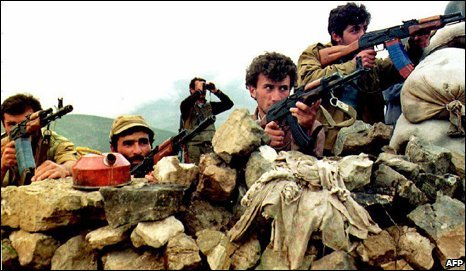Introduction
Armenia and Azerbaijan are countries that have been enemy states for years. They are both countries we’ve led our groundbreaking Soviet tours to many times. As the world teeters on instability during the current pandemic, both countries have begun to engage in yet another armed conflict. As part of the patchwork of the Caucasus, a region defined by various wars, many people fail to understand the reasons behind this specific conflict. So the following is the YPT breakdown of the beef between Armenia and Azerbaijan.

History
The countries of Armenia and Azerbaijan both have long-running differences that range from religion and ethnicity to politics. Azerbaijan is populated largely by Turkic Muslims which makes it a close ally of Turkey. Armenia is populated largely by Orthodox Christians and as such are more aligned to Russia and other Orthodox countries.
When the Soviet Union came along, they divided the territory between the Azerbaijani and Armenian populations, and through their oppressive nature, they kept a lid on ethnic tensions. However, they unwittingly planted the seed for future conflicts as they did in other parts of the USSR such as Donbass, South Ossetia, Abkhazia, and Transnistria.
Armenia and Azerbaijan Today

The modern conflict between Armenian people and Azerbaijani nations stems from a region called Nagorno-Karabakh. During the collapse of the Soviet Union, the strategic region of Nagorno-Karabakh was claimed by both Armenia and Azerbaijan. Around the same time, the enclave of Nagorno-Karabakh had held a referendum boycotted by Azerbaijan where the people chose independence instead of joining either of the two countries.
Nagorno Karabakh was populated by equally large numbers of both Armenian and Azerbaijani people. As the situation worsened, both sides accused the other of calling for the ethnic cleansing of the other side within Nagorno Karabakh. This led to the large Armenian population voting to join Armenia and subsequently led to a civil war that killed thousands of people displaced many more.
By the spring of 1994, Russia had stepped in to negotiate a ceasefire and ethnically Armenian controlled Nagorno Karabakh became one of the four frozen conflict zones that are dotted across the former Soviet Union (the others being Transnistria, Abkhazia, and South Ossetia). Azerbaijan, however, still claims that the territory is theirs and since then there has been a string of violence and ceasefire violations such as the one in this video and the conflict currently taking place.
The South Caucasus is home to a network of oil and gas pipelines and strategic roads. If a full-scale war was to break out this would either block or interrupt these much-needed supply routes. Many believe that as this would create serious challenges for both Armenia and Azerbaijan, a full-scale war is not in the interest of both countries. Thus, we should hope that this skirmish, like the ones before it, fades out soon.





